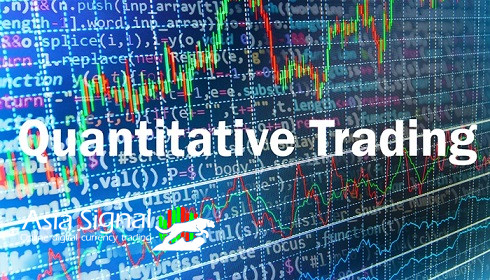Title: The Art and Science of Quantitative Trading: Unleashing the Power of Algorithms
In the ever-evolving landscape of financial markets, the role of technology in trading has become increasingly significant. Quantitative trading, often referred to as algorithmic or algo trading, has emerged as a dominant force, transforming the way financial instruments are bought and sold. This article delves into the world of quantitative trading, exploring its principles, strategies, benefits, and the impact it has on modern markets.
Understanding Quantitative Trading
Quantitative trading is a method of trading that relies on mathematical models, statistical analysis, and computer algorithms to make trading decisions. Unlike traditional discretionary trading, where traders make decisions based on gut feelings or qualitative analysis, quantitative trading is grounded in data-driven insights. These insights are harnessed to identify patterns, trends, and anomalies in financial markets that might otherwise be imperceptible to human traders.

The Components of Quantitative Trading
1. Data Collection and Processing: At the core of quantitative trading is data. Vast amounts of historical and real-time market data are collected, ranging from price and volume to economic indicators and news sentiment. This data is then processed, cleaned, and transformed into a format suitable for analysis.
2. Algorithm Development: Algorithms are the brainpower behind quantitative trading. They are designed to execute trading strategies automatically based on predefined rules and conditions. These rules might involve technical indicators, statistical arbitrage, machine learning predictions, and more.
3. Backtesting: Before deploying an algorithm in real-time markets, it's crucial to assess its historical performance. Backtesting involves applying the algorithm to past market data to evaluate how it would have performed. This step helps refine and optimize trading strategies, ensuring they stand up to different market conditions.
4. Risk Management:Quantitative traders recognize the importance of managing risks. Various risk factors are incorporated into algorithms to prevent significant losses. Position sizing, stop-loss mechanisms, and portfolio diversification are some of the techniques employed to mitigate risks.
5. Execution: Once the algorithm is thoroughly tested and refined, it's ready for deployment. Orders are executed automatically, often at speeds far faster than human traders can achieve. This speed advantage can be crucial in high-frequency trading (HFT) environments.

Strategies in Quantitative Trading
Quantitative trading strategies span a wide spectrum, each with distinct goals and approaches. Some popular strategies include:
1. Trend Following: Algorithms identify and capitalize on trends in market prices. They might buy when an uptrend is detected and sell when a downtrend is identified.
2. Mean Reversion: This strategy exploits the tendency of prices to revert to their historical averages. Algorithms buy when prices are below average and sell when prices are above average.
3. Arbitrage: Algorithms identify price discrepancies between related assets or markets and profit from the price differences. Statistical arbitrage focuses on relative price movements of correlated securities.
4. Market Making: Involves constantly providing liquidity by placing both buy and sell orders. Algorithms profit from the bid-ask spread while minimizing risk.
5. Machine Learning-Based Strategies: Advanced algorithms employ machine learning techniques to uncover complex patterns and relationships in data. These strategies adapt and learn from changing market conditions.

Benefits and Challenges
Quantitative trading offers several benefits:
1. Speed and Efficiency: Algorithms execute trades at speeds beyond human capability, taking advantage of fleeting opportunities.
2. Consistency: Algorithms follow predefined rules, eliminating emotional biases that can affect human traders.
3. Backtesting: Strategies can be rigorously tested before deployment, increasing the likelihood of success.
However, challenges exist:
1. Data Quality: Accurate and timely data is crucial. Poor data can lead to flawed strategies.
2. Overfitting: Strategies that work well in backtesting might fail in real markets due to over-optimization.
3. Market Changes: Rapid market shifts can render even the most robust strategies ineffective.
The Evolution of Financial Markets
Quantitative trading has revolutionized financial markets, contributing to increased market efficiency and liquidity. The rise of algorithmic trading has prompted exchanges and regulators to adapt their practices to accommodate these new technologies while maintaining market integrity.
Conclusion
Quantitative trading represents the convergence of finance, technology, and mathematics. As data availability and computational power continue to expand, the impact of quantitative trading on financial markets is likely to deepen. While it's not without challenges, the systematic and data-driven nature of quantitative trading has undeniably transformed the way professionals navigate the complex world of trading. As markets continue to evolve, so too will the strategies and algorithms that underpin this dynamic field.
We have collected the Best indicators for crypto trading for you in AsiaSignal.

















Comments